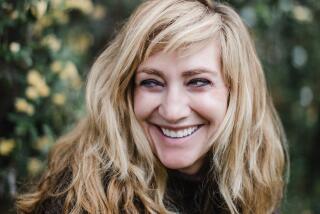DISCOVERIES
A Summer of Hummingbirds
Love, Art, and Scandal in the Intersecting Worlds of Emily Dickinson, Mark Twain, Harriet Beecher Stowe and Martin Johnson Heade
Christopher Benfey
The Penguin Press: 304 pp., $25.95
INTELLECTUAL cross-pollination is almost always a fascinating topic: We like to see how paintings and poetry and music and science intersect at any given point in time -- and how like-minded figures float together on the pages of history. Perhaps, as in Christopher Benfey’s very interesting new book, they find themselves in a particular place at a particular time -- here, Amherst, Mass., in the summer of 1882. The period, Benfey reminds us, was particularly explosive. After the Civil War, the abolitionists’ calls for freedom rang down into other levels of American life: women’s rights, intellectual freedom, freedom in love.
Benfey, professor of English at Mount Holyoke, has gone beyond time and place to examine the era’s preoccupation with hummingbirds, both as fauna and metaphor. “Americans during and after the Civil War gradually left behind a static view of existence, a trust in fixed arrangements and hierarchies,” he writes. “In science and in art, in religion and in love, they came to see a new dynamism and movement in their lives, a brave new world of instability and evanescence.”
Morality was on the operating table, with public examination of the affair of celebrated preacher Henry Ward Beecher (brother of Harriet Beecher Stowe) with a parishioner. Beecher’s sister, author of “Uncle Tom’s Cabin” and Mark Twain’s next-door neighbor in Hartford, Conn., published a provocative piece on Lord Byron’s affair with his half sister in an 1869 issue of the Atlantic Monthly. In the quiet college town of Amherst, Mabel Loomis Todd (famous beauty, singer, painter and wife of astronomer David Todd) pursued an affair of her own -- with Emily Dickinson’s brother -- while she herself was pursued by the great painter of hummingbirds Martin Johnson Heade.
This was also the time of Emily Dickinson’s great love for Judge Otis Lord. The poet wrote her “signature poem,” “A Route of Evanescence,” about hummingbirds, as a gift to her new friend Mabel Todd. We have our very own Bloomsburys right here in the United States. Who needs Russell Square?
--
Is Milton Better Than Shakespeare?
Nigel Smith
Harvard University Press: 240 pp., $22.95
LET’S BE clear: This is not a battle for the minds of readers; this is a battle for their hearts. A smack down, if you will. Who speaks more immediately to the man or woman in the street today -- John Milton or William Shakespeare? Nigel Smith, professor of English at Princeton University, is rooting for Milton, who, he claims, most directly confronted the enduring questions of what it means to be human. “Milton’s presence,” more than Shakespeare’s, “may be discerned in the formation of much of the English-speaking world’s understanding of how the individual belongs to the world and how a just society should be ordered,” Smith writes.
Smith points out that Milton -- an anti-monarchist and in his own way a rebellious thinker -- was widely read by our Founding Fathers and that he thus has a unique meaning for Americans. “Take the verse, read it, and start to think your liberty through again even as the poetry ennobles,” Smith advises.
--
More to Read
Sign up for our Book Club newsletter
Get the latest news, events and more from the Los Angeles Times Book Club, and help us get L.A. reading and talking.
You may occasionally receive promotional content from the Los Angeles Times.






